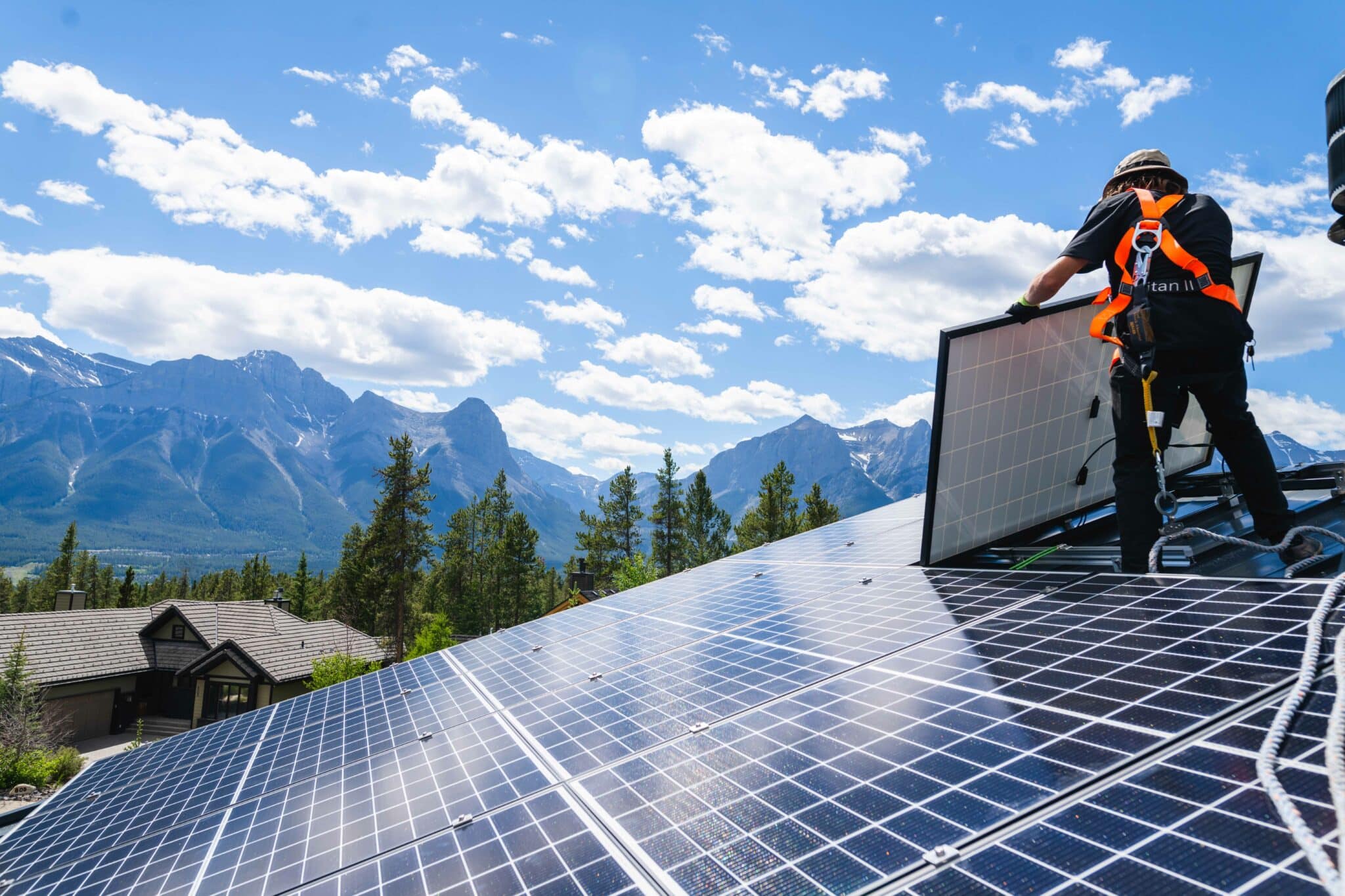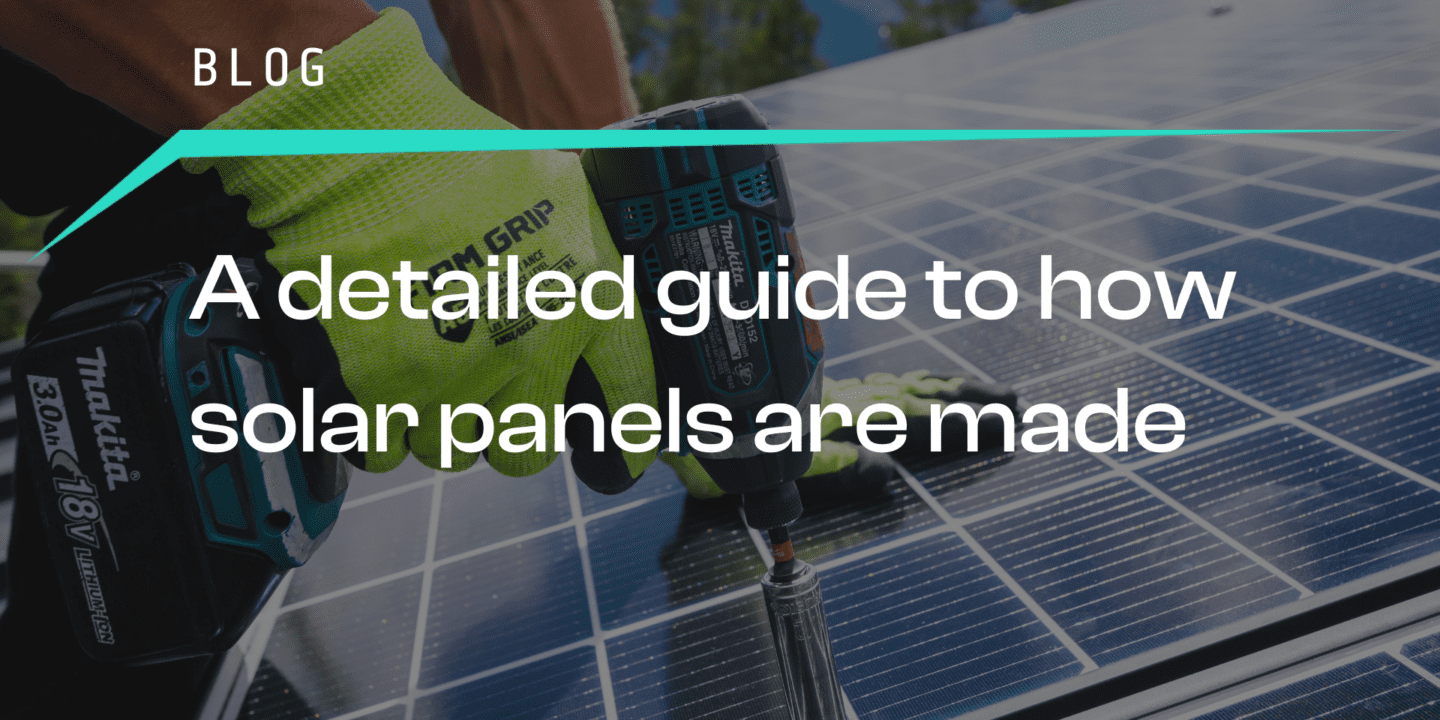Solar panels save you money save the planet, and pay themselves off after several years.
They suck up rays from the sun, converting them into solar energy to power your home or business.
But have you ever wondered how solar panels are made?
This blog article will give you the answers, keep reading to learn all there is to know!
How Are Solar Panels Made?
It’s a common question: “What materials make up solar panels?”
So, let’s walk through the step-by-step process of making solar panels!
Step 1: The Creation Of Silicon Ingots
Curious about how solar panels are made? It begins with the production of silicon ingots.
Silicon is a vital part of solar panels as it’s a semiconductor material that absorbs sunlight to convert it into electricity.
Initially, we create silicon ingots by melting high-purity silicon in a furnace at temperatures exceeding 2,550 degrees Fahrenheit.
This process produces molten liquid, which then gradually cools to form a single crystal shaped like a cylinder.
Following this, we shape the crystal to match the dimensions required for our purposes at Zeno.
Once we form the silicon ingot, we slice it into very thin wafers using a saw—typically around 200 micrometers thick, equivalent to the thickness of a sheet of paper.
After slicing, the wafers undergo cleaning and etching to eliminate any impurities that may have emerged during the slicing process.
And if the resulting wafers have a consistent thickness, they’re right to produce effective solar panels.
Calculate your solar potential now and take the first step towards energy independence with our Solar Panel Calculator!
Step 2: Creating The Modules
Step 2 is to add a thin layer of phosphorus to one side of the wafer and boron (a dark amorphous powder) to the other side.
This process produces what we call a p-n junction—the fundamental building block of a solar cell.
The p-n junction then allows the solar cell to generate an electric field, which separates the positive and negative charges created when sunlight hits the cell!
The separation of charges generates an electric current, powering devices or allowing storage in a battery for future use.
After creating the solar cells, we assemble them into modules—a crucial step in the production of solar panels.
A typical module consists of 60 or 72 cells connected in a series.
Subsequently, we wire the cells together using a conductive adhesive and apply a thin layer of solder to strengthen the connections.
Following that, we test the modules for power output, replacing any defective cells.
Considering our goal of fitting our tier 1 solar panels to over a million homes in the next few decades, we highly automate the manufacturing process!
Consequently, this enables us to produce large quantities of solar panels rapidly and efficiently, marking a crucial step in the production of your solar panels.

Step 3: A Glass For the Modules
Specifically, the next step is encapsulating the modules with a layer of glass on the front, and a polymer back sheet on the back to protect the cells from the elements.
This process additionally boosts the efficiency of the solar panel by decreasing the amount of light that the cells reflect.
Step 4: Testing The Modules
After completing the encapsulation process, we test each module to verify that it meets the correct electrical and mechanical standards.
We test the modules for:
- Power output
- Durability
- Resistance to environmental factors like humidity and temperature fluctuations
- And subjected to a hail impact test to ensure that they can withstand extreme weather conditions.
Step 5: Installing The Solar Panels
The solar panels are now ready for installation!
Moreover, we place them on rooftops or other suitable locations and connect them to form a solar panel array.
Additionally, we mount the panels at an angle to maximize their exposure to sunlight and can adjust them as needed to optimize performance.
The solar panels generate energy stored in a battery or fed into the electrical grid, providing you with a source of reliable and renewable energy!

Exploring how solar panels are made? Discover the process.
Understanding Materials: How Solar Panels Are Made?
- Sand
- Silicon
- Metal conductors
- Glass
- Polymer
- Wiring
- Frames
Sand
The first raw material for your solar panels is sand!
This is because silicon is the main component in beach sand.
An arc furnace at very high temperatures converts quartz sand into silicon.
Additionally, the most common material used in solar panel manufacturing is silicon, which is a semiconductor material.
Surprisingly, this aspect of solar panel production remains relatively unknown!
Solar panels also consist of other materials, such as:
Metal conductors
Incorporating thin wafers of silicon between metal conductors forms solar cells.
Glass
This glass is special and designed to maximize the amount of sunlight reaching the cells while protecting against weather conditions.
Polymer
The key function of polymers in solar panels is to encapsulate the cells and protect them from the environment. Polymer material acts like armour; applied over the cells to prevent moisture, dust, and other contaminants from getting inside and damaging the cells.
Wiring
Subsequently, we connect the solar cells with wiring to form a solar panel.
Frames
We then mount the solar panel in a frame to provide support and protect it from damage.
It’s worth noting that there are many different types of solar panels, and some are made differently (for example, some solar panels use thin-film technology), but the above procedure is common.
Contact Us Today!
So here is a step-by-step guide on how solar panels are made!
To learn just how our Zeno solar panels can benefit you, check out this link here.
To learn how much you’ll save on power bills for your home, business, or both, contact us for a quote now.
